Many drivers will select an all-wheel drive vehicle because of how this configuration gives better handling in inclement weather. But many modern vehicles come equipped with snow mode, designed for a similar purpose. So what is the difference between how all-wheel drive works and snow mode? We researched both from multiple professional sources so that you'll understand what separates them.
Snow mode will have your vehicle's wheels operate independently of one another while the mode is engaged. An all-wheel drive vehicle will be configured to do this, but engaging the snow mode will make it more able to moderate the amount of torque needed in case traction is lost on slippery surfaces.
You might also be wondering if you can turn snow mode off while you're driving, or if snow mode is more fuel efficient. For the answers to these questions and more, read on to see what we've uncovered in our research.
The differences between snow mode and all-wheel drive
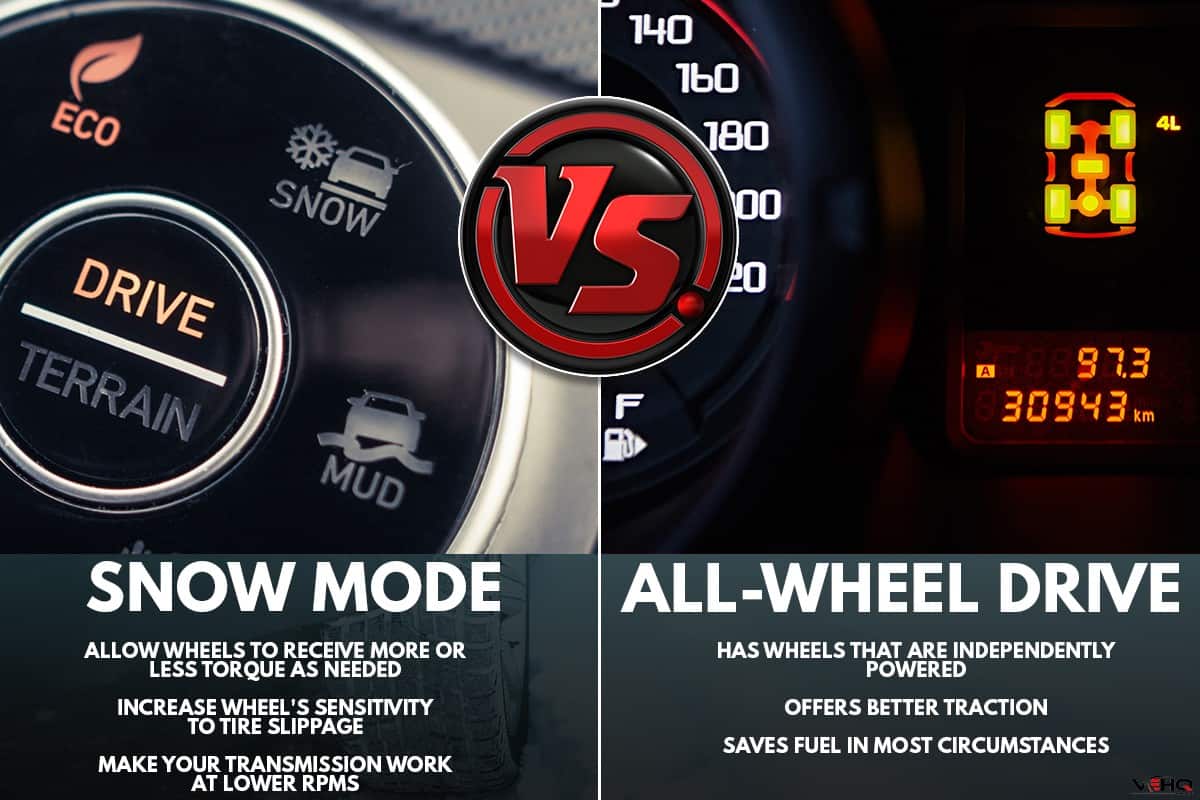
All-wheel-drive and snow mode will give a vehicle an advantage when the conditions on the roadways are slick.
Both focus on the amount of torque the wheels will receive. Each wheel will work independently of the others so that maximum traction can be achieved.
But this is where the similarities between the two end. Let's take a closer look at what the differences are between a vehicle with all-wheel drive and snow mode.
All-wheel drive is how the vehicle has been configured to operate
Vehicles will typically come with one of four drivetrain configurations.
Two-wheel drive, which can be either front or rear-wheel powered, is the most common. Other models will be constructed to have either four-wheel drive or all-wheel drive. Each one has its advantages and disadvantages.
Because an all-wheel drive vehicle has wheels that are independently powered, they will offer better traction than ones with front or rear-wheel drive.
But this does not mean that the wheels are independently powered at all times. In many models, the rear wheels are only powered as needed.
So if the onboard computer senses that the rear wheels are beginning to slip, the amount of torque is adjusted.
This type of all-wheel drive saves fuel in most circumstances. If all four wheels are independently powered full-time, it can burn more fuel.
However, under certain road conditions, having your wheels powered in this way can save you a bit of fuel. We'll discuss this more later in this post.
Snow mode is a function that can be turned on and off as needed
Snow mode is not a configuration. It is a feature that the driver can engage that will allow the wheels to receive more or less torque as needed.
Though an all-wheel drive vehicle is already able to do this, turning on snow mode will increase the wheel's sensitivity to tire slippage.
When the onboard computer senses that one tire is spinning, it will increase the amount of torque to the other wheels. This action will reduce the likelihood of spinning and keep your vehicle more under your control.
Putting your vehicle in snow mode will also make your transmission work at lower RPMs. You'll find that snow mode will impact how your accelerator reacts when you press on it, too.
Reducing how much power your engine gets from stepping on the throttle reduces the impact and likelihood of tires spinning without gaining any traction.
Can you turn off snow mode while you're driving the vehicle?
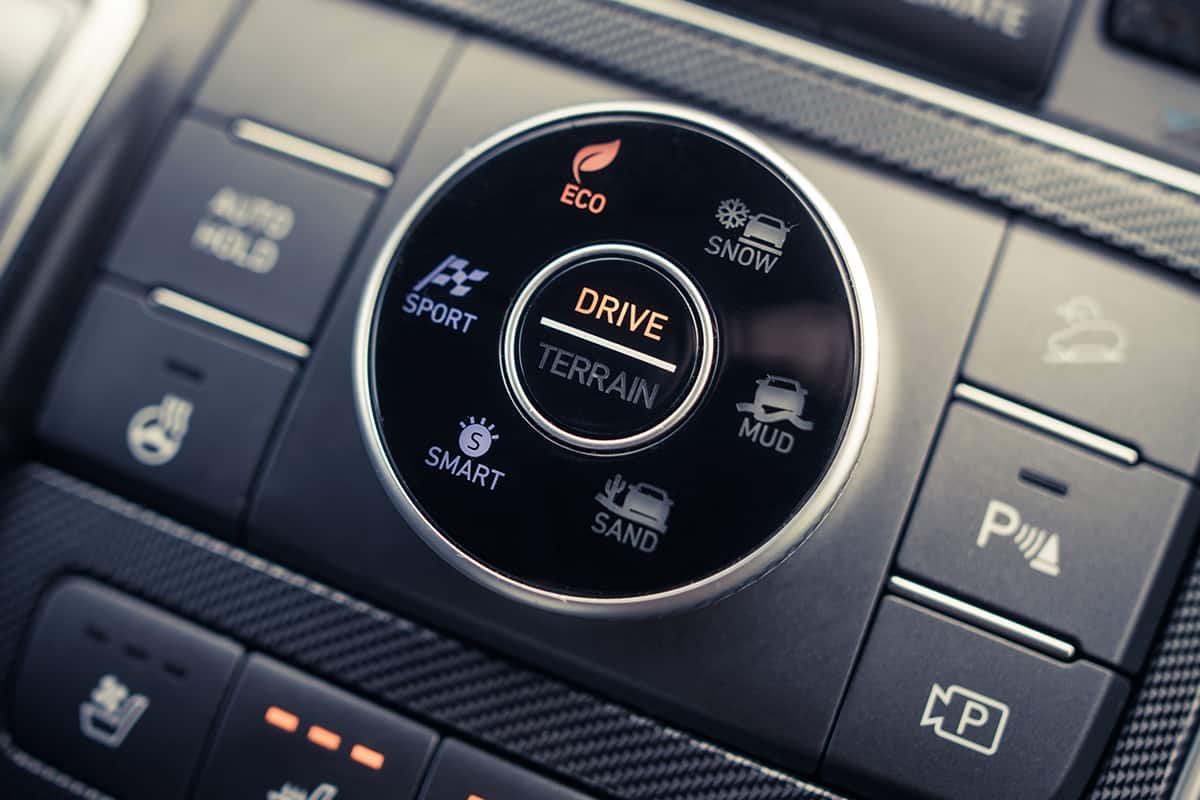
When the roads are getting slick, you can engage the snow mode feature with just the push of a button. In an instant, your onboard computer will work to prepare your wheels for an increase/decrease in torque, as well as keep the transmission at lower RPMs. You'll also find that you don't need to start or stop your vehicle to go in or out of this mode.
Driving conditions can change unexpectedly. Heavy rains can start and stop in an instant. The road that you're traveling might be slick for a long stretch, only to be completely clear by the time you're halfway through your journey.
So, if road conditions are changing, you can press the snow mode button to enter and exit this feature at any time.
Is driving in snow mode more fuel efficient?
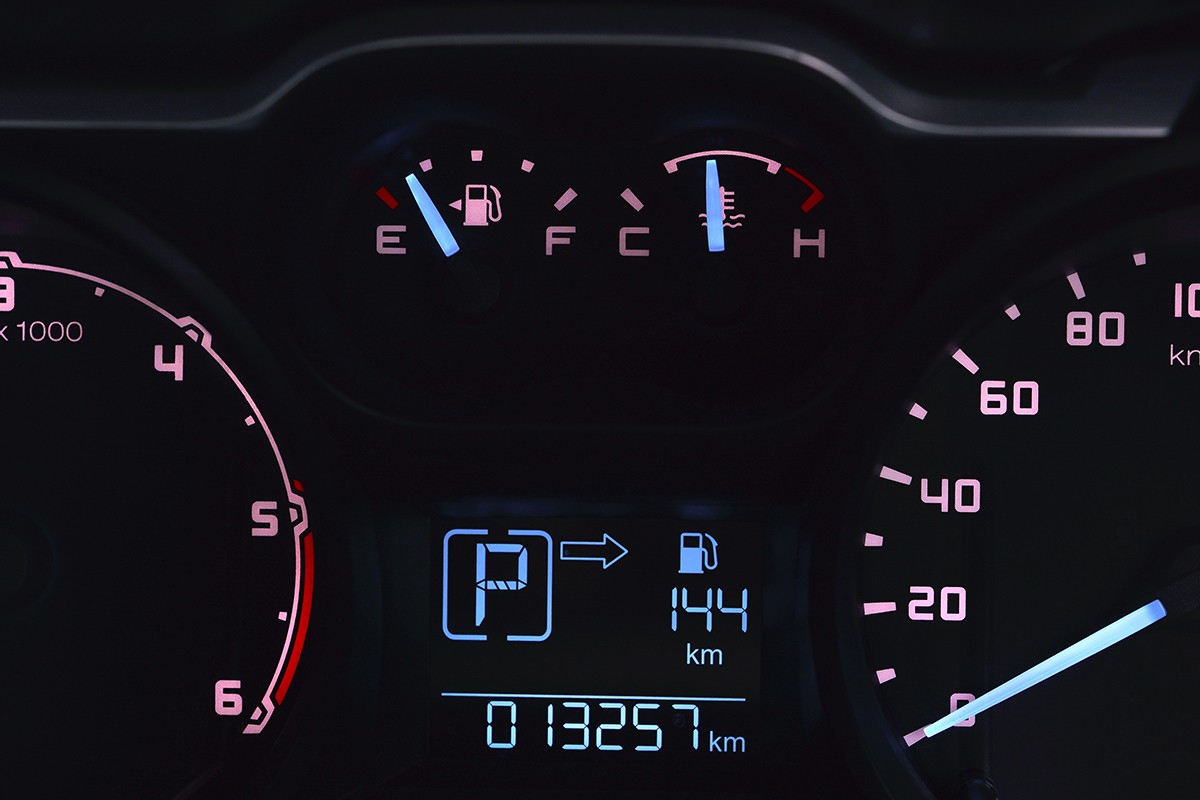
All-wheel drive vehicles will typically get fewer miles per gallon. These vehicles are a bit heavier, making the engine work just a bit harder to propel it forward. The more weight it carries, the more fuel it must expend.
But in slick conditions, all-wheel drive can save a bit on fuel. Tires spinning out of control burn a lot more fuel than you might realize. For this reason, snow mode does make a vehicle a bit more fuel efficient as well.
When your vehicle has snow mode engaged, it will allow you to have better control over it and reduce spinning tires. Constantly revving the engine to navigate slick spots or heavy snow does burn fuel up.
Though you won't see a giant difference in fuel economy savings, those who drive a lot in snowy or icy weather will certainly feel the difference.
Is it better to drive slow or fast in snow mode?
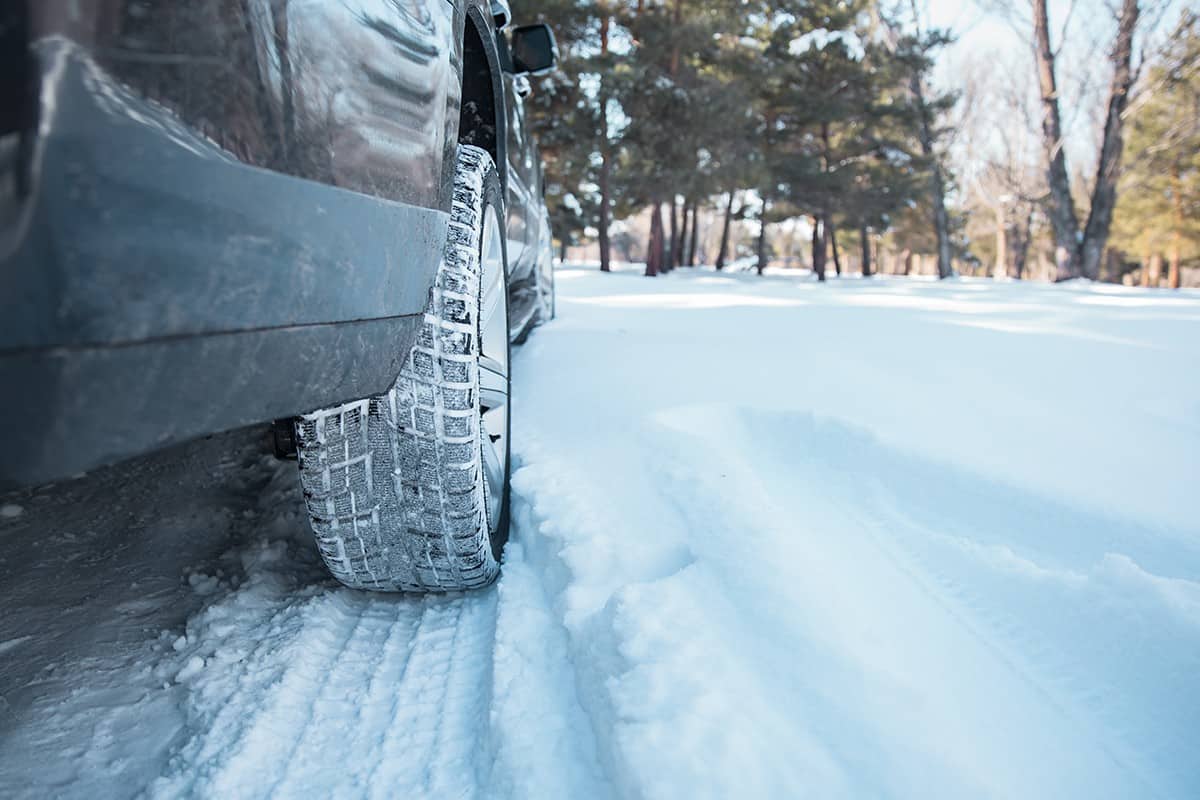
How fast you should drive in snow mode is much more about the road conditions than it is about the mode your vehicle is in.
While there is no set speed that you should drive when it is snowy or icy, common sense will hopefully dictate that you are driving at a reduced speed.
The speed that you drive will not be affected by engaging in snow mode, but it might be slower to accelerate.
Slick roads mean paying extra attention to how your vehicle is handled. It can be easy to lose control of a vehicle when the conditions worsen, even if your vehicle is configured with all-wheel drive or equipped with snow mode.
When the roadways are less than ideal, reduce your speed to one that you are comfortable at. This is important even during rain, as the risk of hydroplaning increases greatly the faster you are driving.
What is better, all-wheel drive or four-wheel drive?
All-wheel drive and four-wheel drive both have advantages and disadvantages over each other. Which one is better for you will mostly depend on where you drive and what conditions you drive in.
All-wheel drive pros and cons
All-wheel drive is best for everyday driving. It's better on fuel economy and has superior traction control on paved surfaces. You'll find that vehicles with this configuration will fare well in snow and on ice, especially during rainy seasons.
The all-wheel drive won't make a ton of difference in deep snow, however. These vehicles are also known to wear out tires more quickly.
If you have to replace one tire on an all-wheel drive vehicle, you'll need to replace them all at the same time.
Four-wheel drive pros and cons
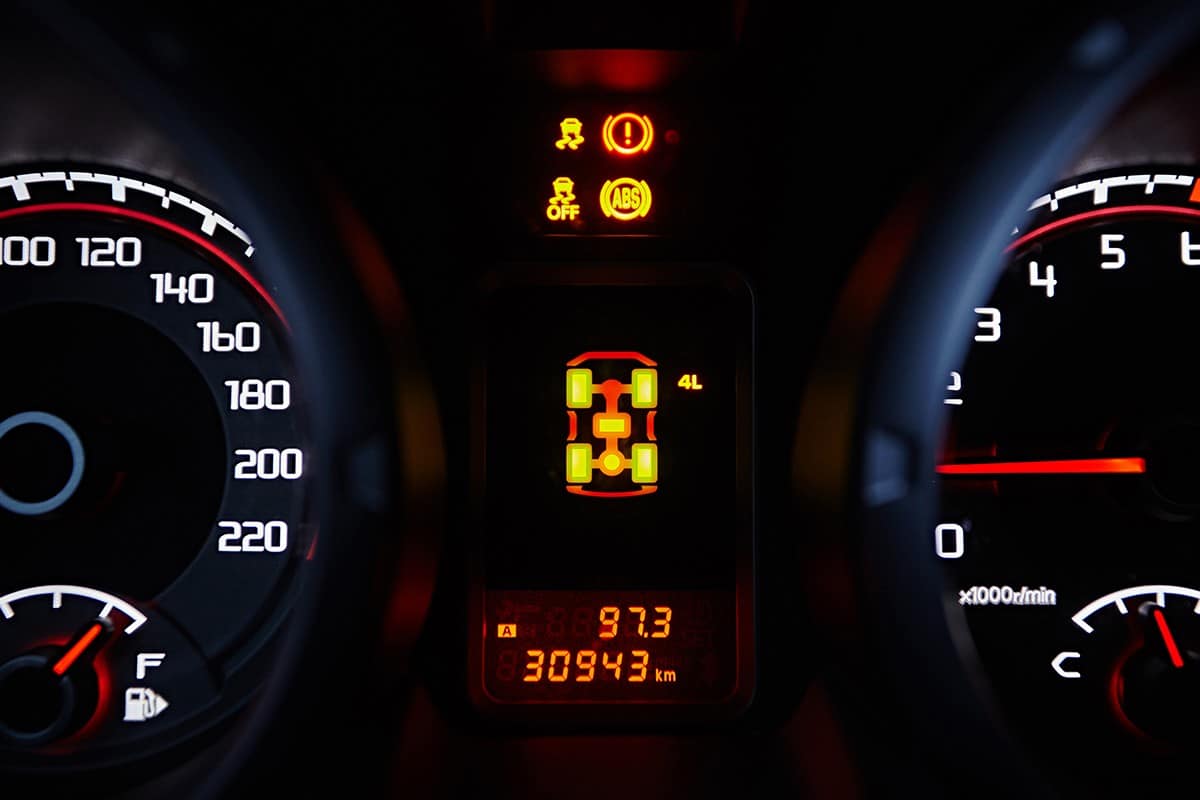
If you are driving off-road, four-wheel drive is the best configuration. These vehicles are made for traveling on rougher terrain, steep hills, and deep snow. They will give your vehicle an amount of power and traction that no other configuration can.
But these vehicles are terrible for fuel economy. And driving in four-wheel drive mode on normal surfaces will do a lot of premature wear and tear on the drive train, tires, and other moving parts of your vehicle.
Vehicles that are full-time four-wheel drive will have various four-wheel drive modes that reduce the amount of fuel that is consumed as well as better performance on paved roadways.
Final thoughts
It's easier to travel in wet or winter conditions if your vehicle is all-wheel drive or has a snow mode feature. But you will still need to exercise caution when traveling through inclement weather.
Weigh out whether all-wheel drive or four-wheel drive is better for you based on the driving conditions you most encounter. Drive safe!
We hope this post on snow mode answered all of your questions. For additional information, we suggest reading the following posts:
Can You Use Engine Brake In Rain, Ice And Snow?
